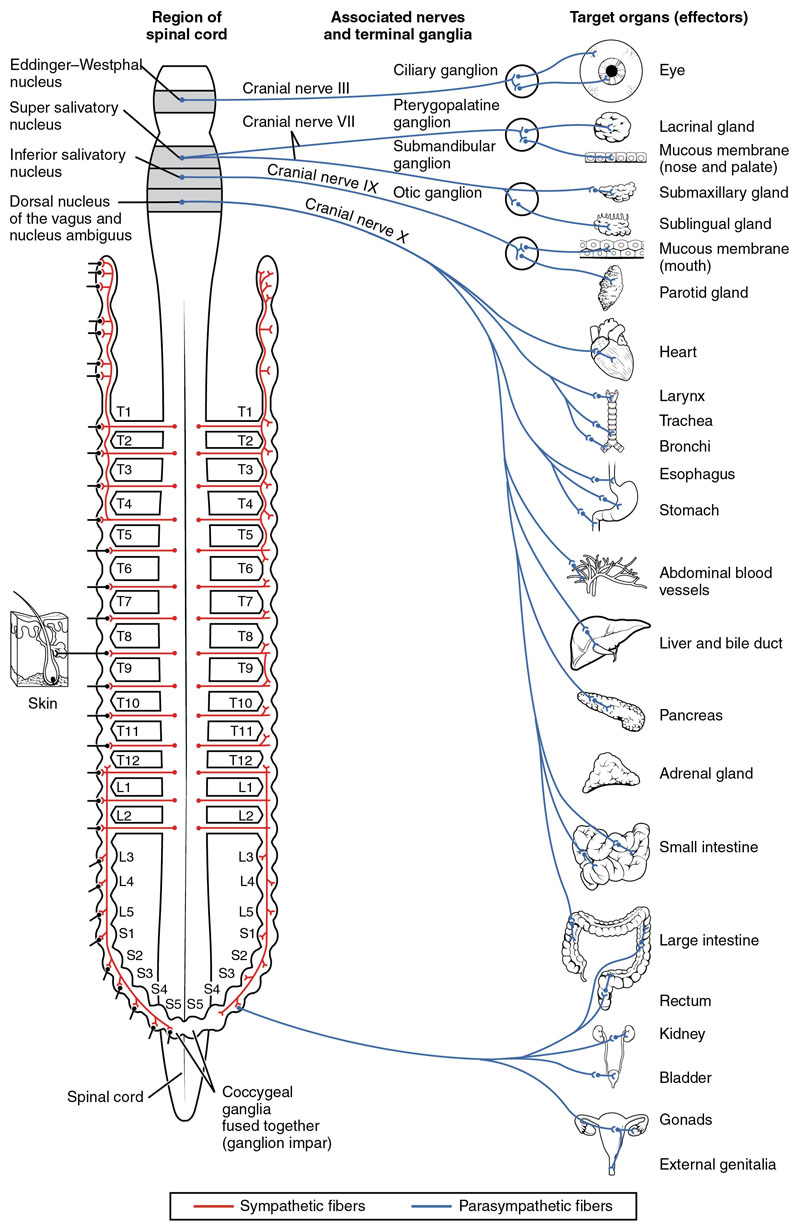The Peripheral Nervous System

The autonomic nervous system is unique in that it requires a sequential two-neuron efferent pathway; the preganglionic neuron must first synapse onto a postganglionic neuron before innervating the target organ. In the sympathetic system, the ganglia are arranged in two chains adjacent to the spinal column. In the parasympathetic system, the ganglia are located adjacent to or within the organs they supply.
- Interneurons create neural circuits, enabling communication between sensory or motor neurons in the peripheral nervous system and the creation of extensive networks within the central nervous system.
- A reflex arc is a neural pathway that controls an reflex action.
- The somatic nervous system (voluntary nervous system) is the part of the peripheral nervous system consisting of the afferent and efferent nerves associated with skeletal muscle voluntary control of body movements.
- The autonomic nervous system is the division of the peripheral nervous system influencing the function of internal organs, a control system acting largely unconsciously to regulate bodily functions such as the heart rate, digestion, and respiratory rate.